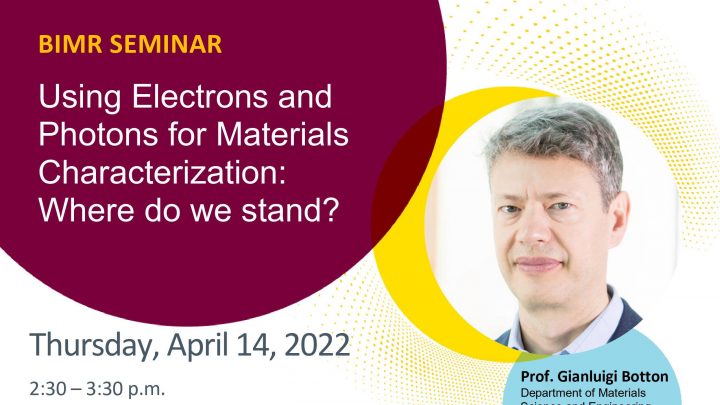Using Electrons and Photons for Materials Characterization: Where do we stand?
Apr 14, 2022
2:30PM to 3:30PM

Date/Time
Date(s) - 14/04/2022
2:30 pm - 3:30 pm
Categories
Postponed to a later date – More details to be communicated soon.
Electron microscopes are very power tools to study the structure of materials at unprecedented spatial and energy resolution. These improvements are the results of the numerous efforts and foresight of the pioneers in electron optics, instrument developers and risk takers that have led to commercial aberration correctors, monochromators and new detectors. These new tools have increased the performance and information content that can be obtained from electron microscopes. While physicists, chemists and materials scientists benefit tremendously from these improvements, we need to be mindful of the fact that there are many other tools that provide complementary information and that there are limitations to all techniques. In this presentation, I will show some recent examples of electron microscopy work related to the quantum materials, battery materials and detection of plasmonic modes in complex noble metal structures. Then I will focus on the complementary photon-based techniques that are available in synchrotrons. With energies ranging from sub-meV to 100keV, there is a wealth of information that can be extracted from imaging, spectroscopy and scattering methods, from bonding environments of single atom catalysts, electronic structure of buried interfaces, and Fermi surfaces, to imaging of cochlear implants, spectroscopy in in-operando conditions and trace contaminants in the eyes of zebra fish larvae and whales. These examples highlight the benefits of considering multiple techniques when one needs to understand the structure and composition of a very broad range of samples.
Bio:
Gianluigi Botton received a degree in Engineering Physics and a PhD in Materials Engineering from Ecole Polytechnique of Montréal. He was Postdoctoral Fellow in the Department of Materials Science and Metallurgy at the University of Cambridge from 1993 to 1998. He joined the Materials Technology Laboratory of Natural Resources Canada (NRCan) in 1998 as a research scientist. In 2001 he moved to the Department of Materials Science and Engineering at McMaster University where he holds a Tier 1 Canada Research Chair in Electron Microscopy of Nanoscale Materials. He received the Metal Physics Medal of the Canadian Materials Science Conference (2017), the Lee Hsun Research Award from the Institute Metals Research of the Chinese Academy of Sciences (2017), the Microbeam Analysis Society Presidential Award (2020) and he is Fellow of the Microscopy Society of America and Fellow of the Royal Society of Canada. Prof. Botton established the Canadian Centre for Electron Microscopy-CCEM, a national facility for ultrahigh-resolution microscopy, and was its director for over 11 years. In May 2019, he became the Science Director at the Canadian Light Source, Canada’s synchrotron.

